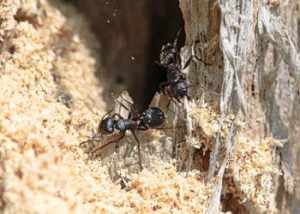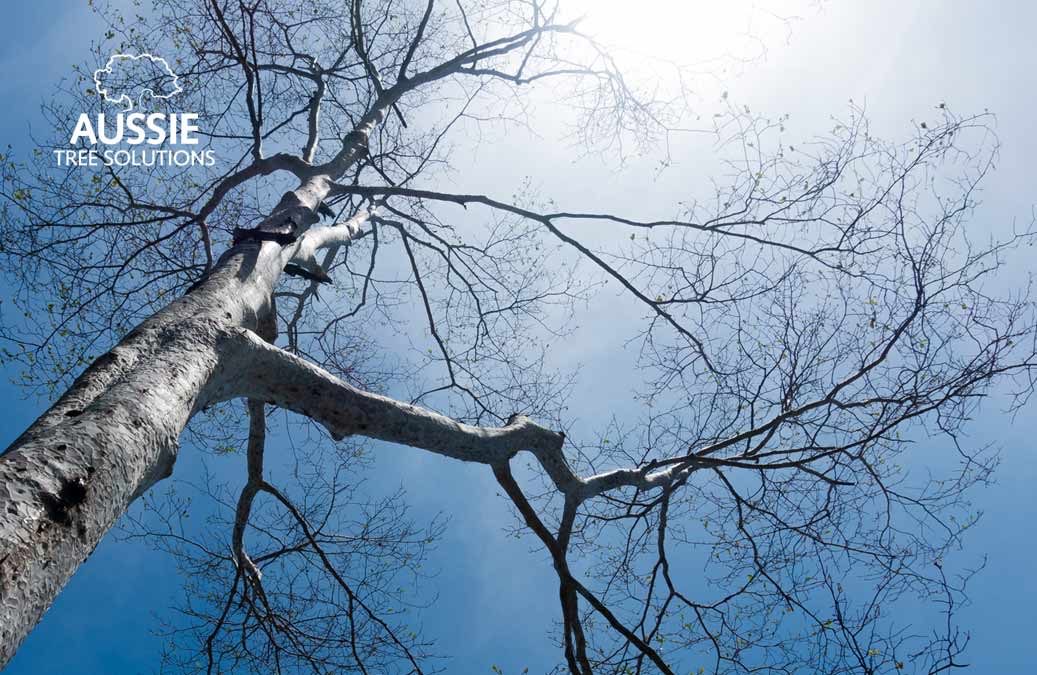Most of us never stop and consider that a tree is a living thing, and like all living things around us, a tree can grow sick and even die. Generally, most of us take for granted the needs and sensitivities of a tree, and we don’t realise that if improperly cared for, a tree can end up dying.
So how can we prevent a tree from dying? The most important thing is avoiding common tree care mistakes, which many homeowners commit without realising that they are hurting or killing their tree. Everything from cutting your tree in the wrong place to cutting your tree at the wrong time can be enough cause to send your tree to an early grave.
Why Is My Tree Dying Or Dead?

If you wake up one day and finally notice that your tree doesn’t look to be in great shape, then it might be dying. Did you kill your tree, did other external factors kill your tree, or did your tree die of natural age?
Firstly, most trees have incredibly long lifespans. Even the most short-lived trees (palms) live about 50 years, and the average tree you might have in your backyard can live for 50-80 years on a natural lifespan (then there are trees that live thousands of years, such as the red cedar or giant sequoias). This means that your tree most likely didn’t die of natural age.
Many homeowners might ask – why is my tree dying when I take care of it, but trees in the wild can last for ages? The answer is that trees in the wild aren’t being cut for aesthetic or safety purposes, while your tree is; and this is the action that can determine the life or death of a tree.
Symptoms Of A Dying Tree

If you fear that your tree might be dying, look out for some obvious symptoms. These include:
- Wilting leaves
- Curled up leaves
- Browning leaves
- Damaged bark
- Cracks in the bark
- Cankers, or “sores” in the bark
- Ants and other insects
- Fungi colonies
- Leaning trees
- Dead branches
Of course, while these symptoms do not necessarily mean that your tree is dying, they do indicate a higher possibility that something is wrong with your tree. To ensure that your tree is healthy and happy, here are some common homeowner tree mistakes to avoid:
Common Tree Mistakes To Avoid

1. Cutting Incorrectly
There’s a right way to cut a branch, and many wrong ways to cut it. To understand why, you have to understand the reaction trees have to removed branches or limbs. Trees “protect” themselves when they lose branches by sealing the wound after the branch has been cut. This protects it from insects, decay, and diseases creeping into the tree. The area where the branch connects with the tree is known as the collar, and the collar is where this seal grows.
Cutting too close to the tree or too far from it can negate the sealing ability of the collar. If you cut too close to the tree, you risk cutting off the collar, thus preventing the seal from growing; if you cut too far from it and leave too much of a branch behind, the wound will be too far from the collar for a seal to grow over it. Cutting in the wrong place leaves your tree susceptible to all kinds of problems.
2. Improper Watering
Like any plant, trees need water to live, and too much or too little water can be an early death sentence. Many people do not think that trees are as sensitive to over or underwatering, because in most cases we let weather naturally deal with tree watering.
However, younger trees (trees younger than 5 years) are more sensitive to under or overwatering, and require more attention. If you notice that you are getting less rain than usual during the summer, it might be time to intervene. But make sure not to overwater, or else the tree will be unable to find any oxygen in the soil.
3. Amateur Lopping
Lopping is a kind of heavy-duty pruning method, in which large amounts of the tree are removed. However, amateur lopping can be incredibly dangerous for your tree, as amateurs do not know how much a tree can take without dying.
By cutting off too much foliage, you risk a number of problems, including:
- The seals not growing over the branches
- High infestation chances
- Various shoots or suckers growing back from the source of a single cut branch
Lopping should always be done by an expert arborist, to ensure the best future growth of your tree.
4. Pruning At The Wrong Time
You may not realise it, but trees also follow an annual cycle of dormancy and growth. This means that you do not want to cut a tree while it is in a growth cycle, and it is best to prune your tree in the winter, right before the arrival of spring. By pruning the tree in the winter, you cut it while it is dormant and conserving its nutrients, giving it the best opportunity for rapid growth in the coming spring.
Avoid Tree Mistakes With A Professional Arborist From Aussie Tree Solutions

Let’s face it: if you’re not a professional arborist with years of experience maintaining and handling trees, you might be risking the life of your tree; and with so many years invested in your tree, is that really something you want to risk?
At Aussie Tree Solutions, we have the best arborists Brisbane can offer, and have helped Brisbane homeowners with their trees for over the last 40 years. Call us now for an obligation free tree maintenance quote, and learn why Aussie Tree Solutions is your tree’s best friend today!
*All tree work should be done in accordance to local council regulations. Before conducting any tree work please contact either your local council or tree specialists for the latest regulations. Aussie Tree Solutions are professional tree removal, pruning and maintenance experts. For any questions relating these services, please call Aussie Tree Solutions on 07 3351 1722.

